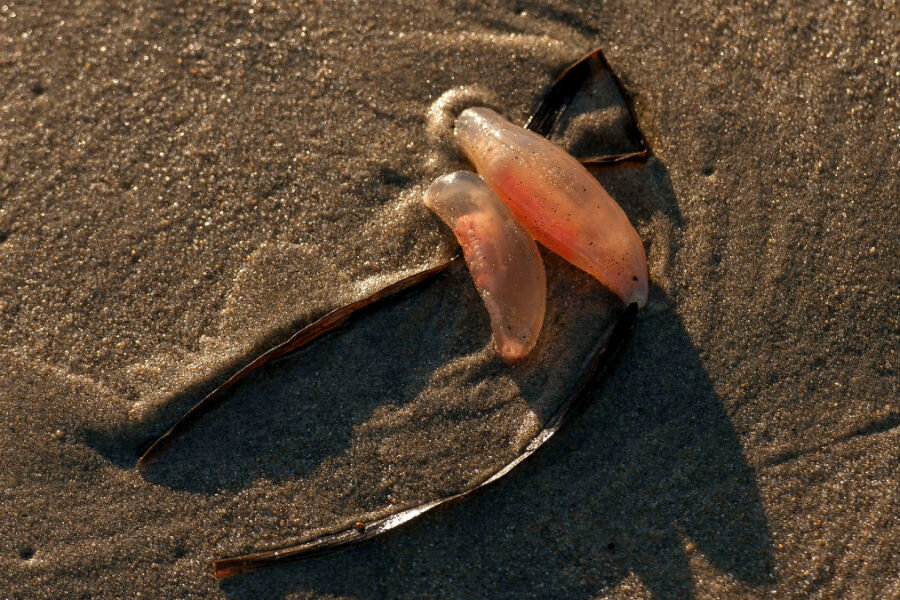Huntington Beach mystery: Where did these jelly-like creatures come from?
Loading...
Several scientists may have solved the case of the mysterious jelly-like creatures that washed ashore on California's Huntington Beach earlier this week.
The pinkish gelatinous pods that showed up on the beach on Monday, causing curious passersby to stop and take photos, prompted a wave of speculation on social media from locals wondering just what the mysterious creatures were and how they had gotten there.
Serious and silly suggestions posted in a Huntington Beach online community forum ranged from baby tremor monsters to burrowing sea cucumbers to coyote eggs. Huntington Marine Safety Lt. Claude Panis joked that they were "alien eggs" set to "hatch and take over the world," The Orange County Register reported.
Once washed ashore, some of the creatures began to burrow in the sand, wrote Don Coursey, who came across the pods while walking on the beach and posted pictures online.
"It feels like ... Jello," Mr. Coursey told KTLA. "If you were a little kid, you’d love to have something like this so you can drop down your sister’s shirt."
One of the social media speculators may have been correct in identifying the creatures as a type of sea cucumber, according to an expert from California State University, Long Beach. Marine biologist Bruno Pernet told CBS Los Angeles that the pods had likely been washed ashore by a storm last weekend.
Another scientist suggested that they may be pelagic tunicates, otherwise known as salps.
"These marine invertebrates look sort of like jellyfish, but they are actually more closely related to vertebrates (e.g., humans) than to other invertebrates," wrote Matt Bracken, an associate professor in the Department of Ecology and Evolutionary Biology at the University of California, Irvine, in an e-mail to The Orange County Register. "They occasionally bloom off the California coast."
Huntington Beach Marine Safety Lt. Eric Dieterman told the Los Angeles Times that it wasn't the pods' beach debut, but it was the first time he had seen such a large quantity of them at once.
"They've made an appearance on our beaches before," Lt. Dieterman said. "Not in this number, but I have seen them in the past."
The West Coast is no stranger to mysterious gelatinous creatures: In 2014, thousands of Velella velella, otherwise known as "by-the-wind sailors," washed up along beaches in Washington, Oregon, and California, causing a stir online and in the media.
"A lot of people probably never knew an organism like this existed in the world," David Bader, director of education at the Aquarium of the Pacific in Long Beach, Calif., told CNN at the time. "And you know the winds change, and all of a sudden they wash up on shore and we get to see what the ocean is really made of."








